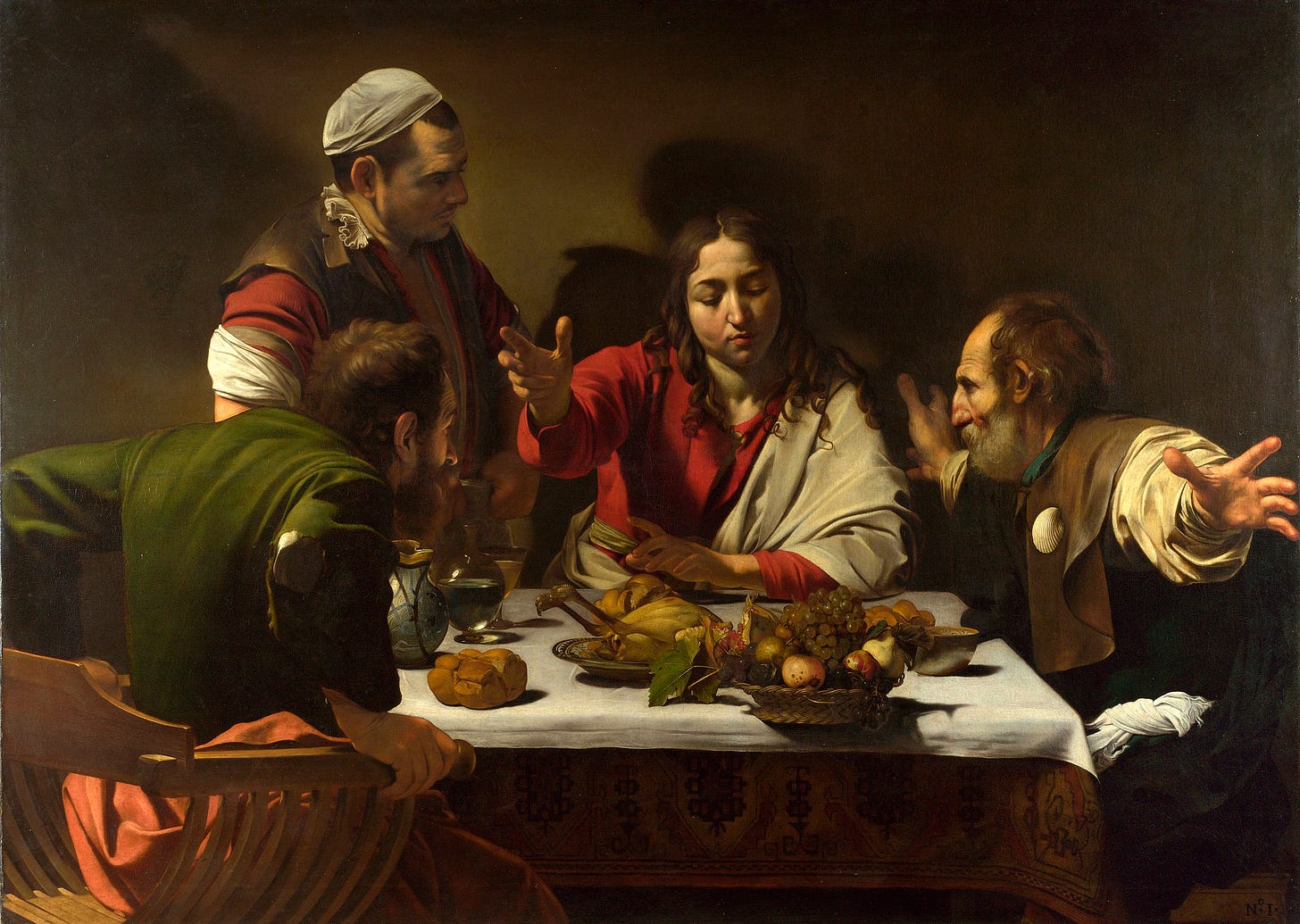Nobody can recognize Jesus after his resurrection. It’s a theme, running through many of the stories of Jesus’ encounters with followers and disciples after he died. The details vary, but the basic structure is the same; Jesus meets someone who ought to know him, but they don’t recognize him, and it’s only after he reveals some part of his personality or performs some action that the person understands that the one they have been talking to is Jesus. There are enough of these stories that it seems that there must be something behind it—that the motif of misunderstanding Jesus’ post-resurrection embodied presence must have stretched back to the earliest stories about the disciples and followers struggling to come to terms of with Jesus’ continued presence in their lives. This gap in recognition is large enough to accommodate whatever agenda you want to put into it: one could suggest that Jesus really was dead and the disciples were encountering impostors, or one could suggest that Jesus had been dramatically physically altered by the experience of resurrection, or one could suggest that Jesus was disguised to produce just the kind of surprise that these stories feature.
When I read these stories, though, I think about patterns of recognition, and recognition of patterns. I owe some of this to the theology professor I had in my second year of seminary, Peter Hodgson, whose ideas were fairly influential for me. Hodgson used a phrase I had never heard before—“Christ gestalt”—to talk about the way God shows up in the world. A gestalt is a pattern or a figure that appears as a recognizable whole in the world; gestalt theory is a psychological theory about how many smaller things can collaborate to produce a holistic image in the human mind. It’s a theory about perception and its relationship to reality. For Hodgson, the “Christ gestalt” is a pattern of being that shows up in the world, such that we can recognize a Christ-like presence even when there is no Jesus present.
For Hodgson, Jesus was the definitive example of the “Christ gestalt,” but by no means the only example. We see Christ-like things all the time, and Christ-like figures and persons populate our world. What does this gestalt look like? It is made up of things like self-sacrifice, generosity, love, defiance in the face of persecution, calls for righteousness, embrace of the world’s downtrodden, the pursuit of justice, and more. All of those things individually might appear in our world without looking Christ-like to us, but together, they trigger a kind of gestalt thinking that evokes Christ. Jesus lived in this gestalt, but others have lived in it too, and continue to do so. Perhaps the clearest example of this is Rev. Dr. Martin Luther King, Jr., who fit the “Christ gestalt” in a number of ways. But others have done so too, from famous folks like Gandhi to everyday people we know. On a surface level, the Christ figure shows up in popular culture in places like Neo in the Matrix movies, Luke Skywalker in the Star Wars universe, and the title character in the film Babette’s Feast. But on a deeper level, we can see the same pattern of Christ-like actions all over the place.
That’s one way to read these stories of Jesus being unrecognizable in the gospels after his resurrection: they are moments of encounter with the “Christ gestalt” that do not necessarily match up with the person and body of Jesus as he was known in his life. Notice how the moment of recognition in these stories always comes when Jesus does something characteristically Jesus-like. In John 21, Jesus becomes recognizable to Peter when he teaches them something about fishing. In John 20, Jesus becomes recognizable to Mary when he calls her name. In this story in Luke, Jesus becomes recognizable to the disciples when they were eating together, and Jesus blessed the bread and broke it. In all three cases, Jesus is recognizable as Jesus not because of his physical appearance but because of the patterns of his behavior.
This pattern of seeing Jesus where there was no one who looked like Jesus is a historical curiosity, but it’s a theological gold mine. The implications are enormous. Christians have spent two millennia fighting over things like the bodily resurrection, but right here at the beginning of the tradition are these stories about how the body isn’t the most important part—it’s the patterns of behavior that matter. The patterns of Christ-like behavior are how Jesus shows up in the world, not in some body that has been raised from the dead. Of course, the tradition also claims that the body was raised, and there are stories about that elsewhere (including in the gospel of John, sandwiched between these gestalt-stories, in the tale of Thomas and Jesus’ wounds). But we have, from the beginning, this flashing sign pointing to the idea that Jesus is to be found not only in the body of the Jesus who has died, but also in all the ways the image of his life shows up in the world.
What if the Easter season were a season of looking for that pattern, that image, that presence all around us?

